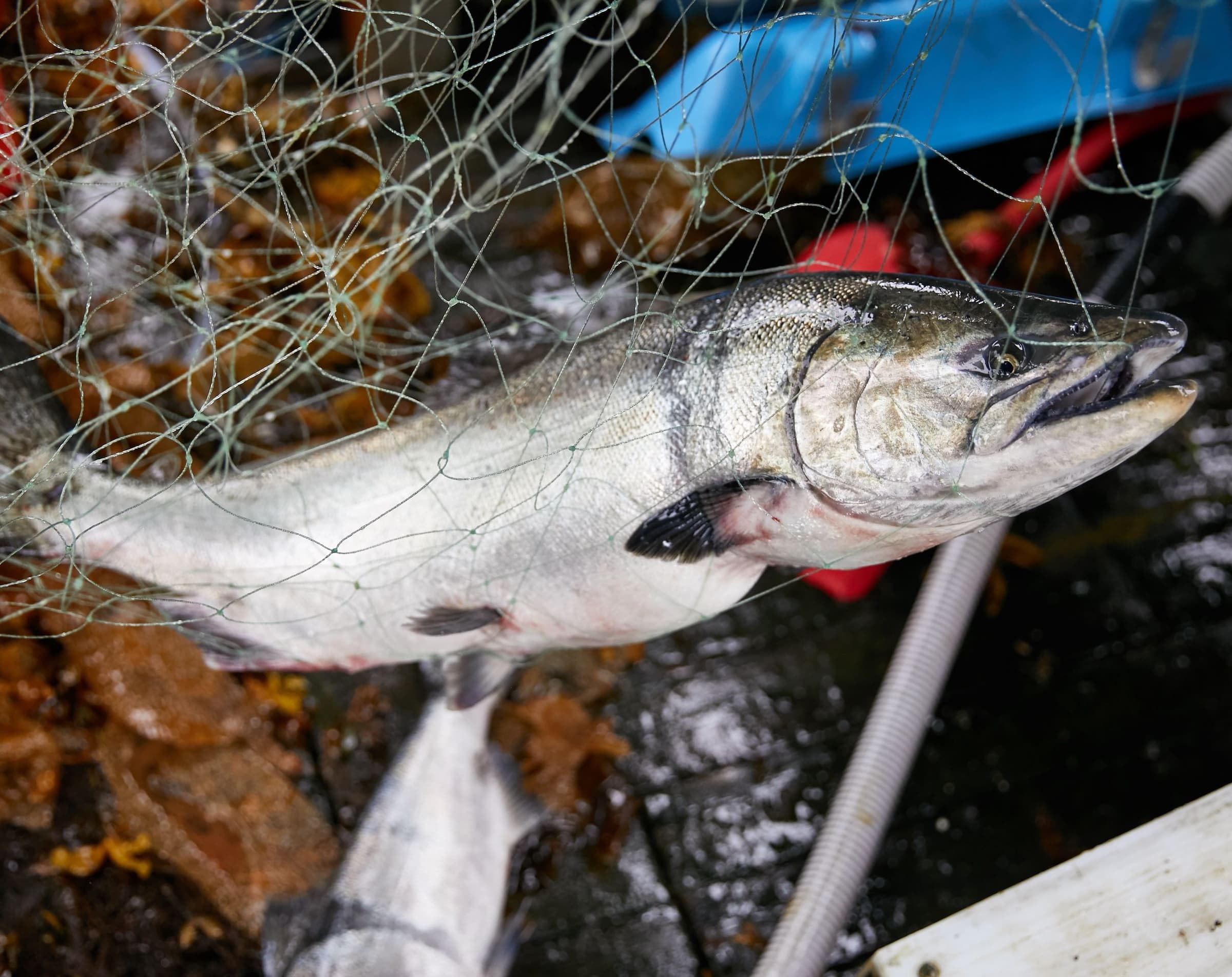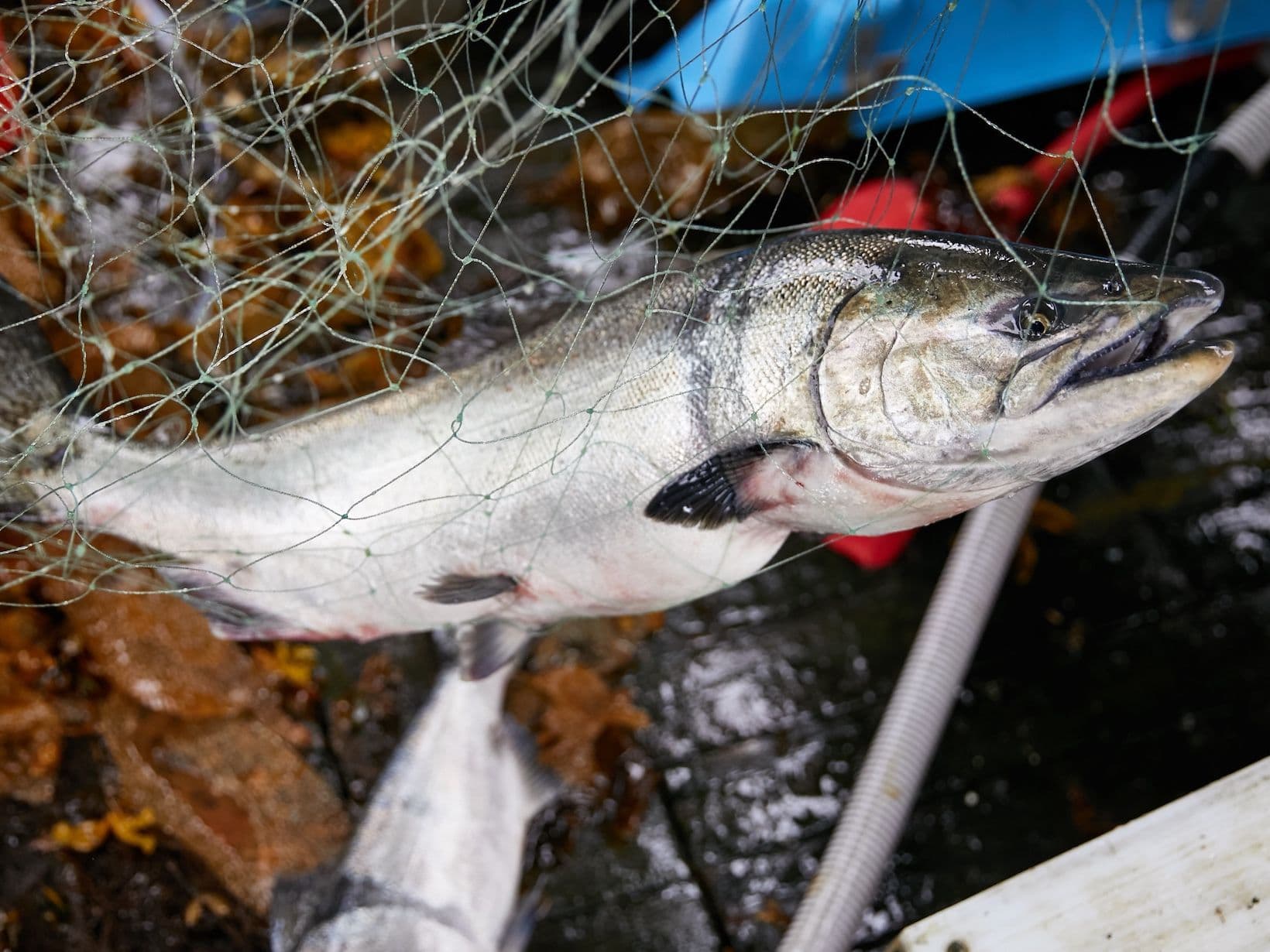How we Catch Salmon
We often talk about small-scale fishermen, but how do they actually catch their fish? For salmon alone, there are multiple methods that Alaskan commercial fishermen use to harvest their catch. Each has its advantages and drawbacks, but a common thread is that the fish are hand-harvested and then immediately bled and chilled. Fast bleeding ensures a cleaner taste, and rapid chilling keeps the fish firmer and fresher, allowing you to enjoy it months later without a decline in quality. Let’s dive into the different ways our fishermen harvest their catch!
Trolling
Commercial salmon trolling has been around since the early 1900s, and Sitka remains home to the largest troll fleet in Alaska. Similar to sport trolling, commercial trolling involves dragging baited lines or lures behind a boat. Trollers typically run four lines, each weighted down with lead cannonballs, with baited hooks or lures attached. Fishermen operate hydraulic reels called “gurdies,” which reel in the lines. Once a line is reeled to a snap, the fisherman unhooks it and pulls the individual salmon in by hand. They use a bat with a hook to stun the fish in the water, then gently swing the salmon onto deck. Immediately after hitting the deck, the fish are bled, cleaned, and packed in ice.
Species like coho have very acidic stomachs that allow them to gain weight rapidly as they prepare to spawn. This means that if a coho isn’t cleaned quickly, acid leaches through the stomach and burns the flesh. While coho are caught in other fisheries, the care taken by trollers in cleaning and handling elevates the quality of their catch.
Kings, or king salmon, are also primarily caught by trolling. They tend to taste best when handled carefully, and pressure bleeding makes a huge difference in quality. Trollers run a gentle stream of seawater through the fish to rinse out all the blood before packing it in ice.
Gilnetting
You might notice that coho salmon aren’t as common in your local grocery store as sockeye. In 2024, over 40 million sockeye were harvested in Alaska — by far the largest wild sockeye runs in the world — caught primarily via gillnetting.
Gillnetting in Alaska is very different from the open-ocean gillnets that often catch a wide range of unintended species. In Alaska, gillnets are set in carefully chosen inland waterways — places where salmon naturally return to spawn. These fisheries are closely monitored by the Alaska Department of Fish and Game, which sets fishing times and areas to ensure enough salmon survive to spawn for future seasons.
Gillnetters string out shallow nets, typically 10 to 15 feet deep, and wait for their corks to bob, signaling that a fish has hit. They keep a keen eye on logs and seaweed to avoid fouling their nets. Once a fish is caught, they reel in the net and hand-remove the fish from the webbing. Over the past 20 years, gillnetters have made significant efforts to improve handling and chilling practices. Although some fish die in the nets and may not bleed out properly, well-handled sockeye are beautiful fish, and kudos to the fleet members who put extra care into their catch.
Set Netting
Using similar nets but based on land, set netters operate by anchoring their nets to the shoreline or in tidal areas where salmon are known to run. The net is left in place for a period while fish swim into the webbing. Because set netters harvest fish directly from the net, they can be very selective and gentle, which helps preserve the quality of the fish. Like other methods, they bleed and chill the fish immediately and then deliver their catch to a processor to be filleted and frozen. They often have smaller boats that can navigate the rivers and inlets on the way to be sold. Setnetters are usually after sockeye salmon, and the largest of those runs are in Bristol Bay.
Purse Seining
The most common method for catching salmon in Alaska is purse seining. This method is often associated with fish destined for canning, especially for roe used in caviar. Seiners encircle entire schools of salmon and scoop the fish into their holds. Large nets are driven out with a small but powerful seine skiff, which guides the net around the school. The crew then lifts the net and fish onto the deck — sometimes getting rained on by jellyfish in the process. Although scooping up large schools may seem less sustainable, the timing of the fishing and the area targeted typically results in very little bycatch.
Seiners usually target pink and keta salmon, which are spawning or preparing to spawn, meaning their flesh isn’t as fatty or flavorful. After loading on deck, the fish are transferred into refrigerated seawater tanks to chill down. Since the primary market for these fish is their roe (eggs), they are only chilled to about 35°F to preserve the eggs. This temperature isn’t ideal for the flesh, and because these fish aren’t dressed or bled, they often end up in cans.
And there you have it — the main methods by which Alaska fishermen harvest their catch. If you ever have questions about how it all works or how we do things, feel free to reach out at marsh@sitkaseafoodmarket.com.



